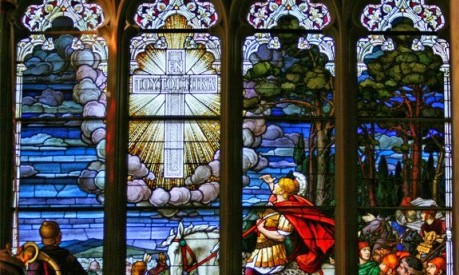In the midst of the activities surrounding the Papal resignation and speculation on the next choice for the Chair of St Peter, a very important anniversary has gone virtually unnoticed. In February 313 AD, in the reign of Pope St. Melchiades (311-314), the Edict of Milan was promulgated by the Emperor Constantine, a measure that granted Christians the freedom to worship openly, preach the gospel and build churches.
This year therefore marks the 17th centenary of the official recognition of Christianity, which was accorded the same rights as all other religions throughout the Roman Empire, thus instituting the concept of religious tolerance. As a result, the Christian religion emerged from the catacombs, prospered and spread throughout the empire and beyond. The hundreds of church buildings standing in Rome alone bear witness to the proliferation of Christian places of worship over the past 17 centuries, leaving a rich artistic and spiritual legacy.
What led to such a historic decision? In the turbulent year 312 AD, while preparing for a decisive battle, Constantine received a vision: In hoc signo vinces – By this sign you shall conquer. Profoundly struck by the message, Constantine took the Christian symbol of the first two letters of the Greek word for Christ (X and P, the one superimposed on the other, known as the Chi-Rho symbol) and ordered his soldiers to mark their standards with this sign before going into battle. He and his troops marched to victory against the army of rival emperor, Maxentius, at Rome’s Milvian Bridge – where even today tourists can stroll across the River Tiber.
The Battle of the Milvian Bridge was depicted in all its triumph and carnage in a fresco in one of the Vatican’s Raphael rooms many centuries later, and another by Piero Della Francesca (in Arezzo). With this historic victory, Constantine secured undisputed power over the Roman Empire and in gratitude legalized Christianity the following year.
Subsequently, Constantine gave orders for the construction of a basilica over the burial ground of St Peter himself. After many changes over the centuries, today a magnificent and imposing St Peter’s Basilica and Square inspire reverential awe and welcome pilgrims from across the globe. Continue reading
Sources
- MercatorNet
- Image: News In Faith
